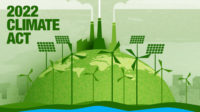In a year of change for Australia-based engineer-contractor Worley, the firm's net income dropped dramatically in fiscal 2023 to $23.8 million, down from $110.8 million the previous year, it said.
The company had revenue of $7.29 billion, compared to $6.25 billion in the prior year, it reported on Aug. 23.
Worley attributed the income drop to the June sale of its refinery maintenance business, which was done to improve profit margins, cut debt and advance the company's goal of shifting away from fossil fuel-related work.
Worley said it lost $154.6 million on the sale, which helped cut its statutory net profit after tax, excluding amortization, to $67 million. That hybrid calculation differs from net income, which includes operating expenses but also tax savings from debt.
The result "reflects the strong growth we’ve delivered and the momentum building around sustainability-related work," says CEO Chris Ashton.
Publicly traded Worley (WOR-ASX) ranks at No. 7 on ENR’s most recent list of the Top 225 Global Design firms, reporting $4.95 billion in 2022 global engineering revenue, of which nearly $4.27 billion is outside Australia. Its rank is No. 52 on ENR’s latest Global Contractors list with $1.9 billion in 2022 revenue, all beyond that nation.
In June, ENR reported that Worley seeks to gain 75% of revenue from sustainability-related business within five years. Ashton noted that the firm is about two-thirds through a three-year estimated $100-million corporate investment in hiring, training, technology and other strategies to boost the transition.
“We’re already seeing that investment pay dividends in positioning us with the markets that we’re in and allowing us to capture work that we may not have been able to without that transformation investment,” he said at the time.
The firm and Princeton University’s Andlinger Center for Energy and the Environment on Aug. 29 announced what they described as "a new action plan for the renewable hydrogen sector."
Their analysis examines the infrastructure delivery challenge to reach net-zero operational carbon by mid-century—including what it says is need for an eight-to-12-fold increase in global electrolyzer manufacturing capacity, four-fold boost in annual capacity additions for offshore wind and a 35% hike in desalination capacity by 2030.
The report found that traditional project delivery methods "will be simply too slow to deliver the infrastructure needed."
Initiatives proposed include government underwriting of demand, streamlined permitting, more standardization in the hydrogen industry and widespread industry sharing of information and best practices, which Worley and Princeton say "will require a shift" in current methods.
With broad adoption of the changes by infrastructure participants, "delivery times could potentially be reduced by 40% while maintaining a disciplined approach on investment," the analysis said.
“We know that the desire to deliver on net zero is strong across the industry, but that needs to be backed up by a pragmatic plan to get there," said Sue Brown, Worley executive group director.
Announcements by European and other energy firms this year to invest more in core oil and gas production amid rising prices should not be seen as a shift in the energy sector's long-term low-carbon commitment, Worley said earlier
But it presents a more complex communication task, Ashton told renewable energy sector publication Recharge. He termed it “a very, very challenging message" to manage.







Post a comment to this article
Report Abusive Comment